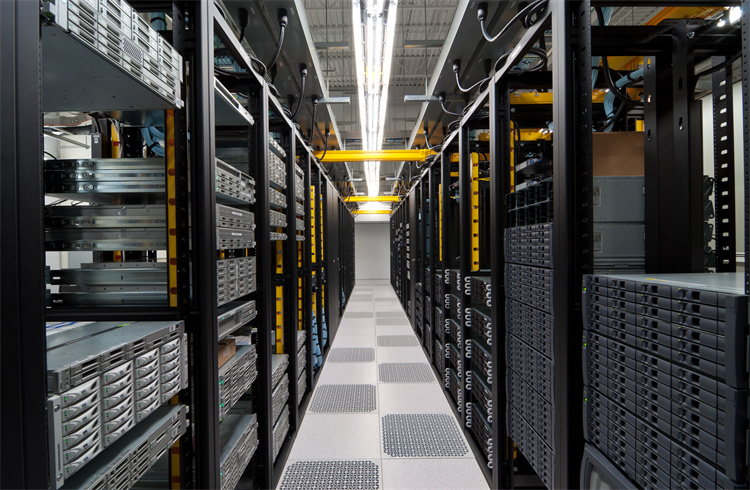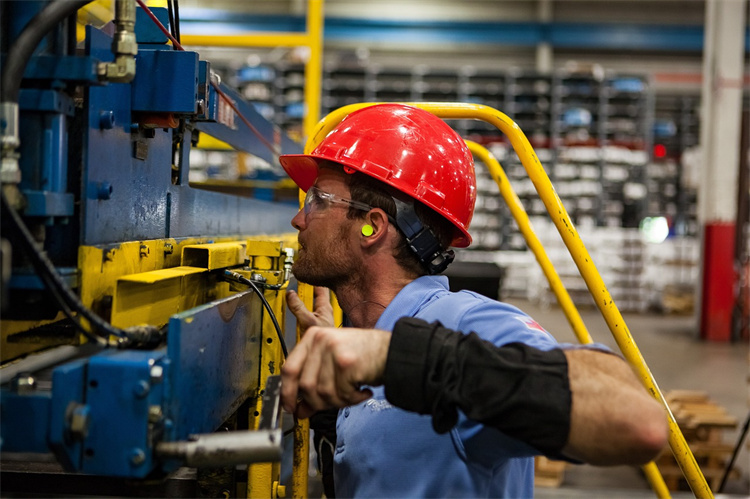Top AI Trends Transforming the Logistics Industry in 2025

Artificial intelligence is reshaping the logistics industry by solving inefficiencies and driving innovation. AI adoption is growing rapidly, with the market projected to reach $565.82 billion by 2033. Companies use AI for route optimization, predictive maintenance, and demand forecasting. These advancements reduce operational costs by up to 50% and improve delivery efficiency.
Key Takeaways
AI makes logistics better by improving tasks like predicting demand and planning routes. This lowers costs and speeds up deliveries.
AI uses data to give useful ideas. It helps businesses predict changes in demand and keep customers happy.
To use AI well in logistics, companies should match AI plans with their goals, spend on tools, and teach workers how to use AI.
The Growing Role of AI in Logistics

Enhancing Efficiency Across the Supply Chain
AI in logistics is revolutionizing how you manage supply chain operations. By leveraging AI-powered tools, you can optimize processes like demand forecasting, inventory management, and route planning. For instance, AI forecasting engines analyze large datasets to predict demand accurately, helping you reduce stockouts and improve inventory turnover. Generative AI tools also simplify tasks like creating shipping reports and maps, saving time and resources.
Real-time fleet tracking and monitoring further enhance operational efficiency. AI algorithms analyze traffic patterns to determine the most efficient delivery routes, reducing fuel consumption and emissions. Companies like DHL have already adopted AI for route optimization, improving delivery speed and cutting costs. These advancements make your supply chain more agile and responsive to market demands.
Data-Driven Decision-Making for Better Outcomes
AI empowers you to make smarter decisions by analyzing vast amounts of data. Metrics like on-time delivery, inventory turnover, and transportation costs provide actionable insights. For example, predictive analytics helps you anticipate demand fluctuations, enabling better inventory planning. Amazon uses AI to analyze sales data, ensuring accurate demand forecasts and efficient stock management.
AI also enhances customer satisfaction. Dynamic pricing models adjust rates based on real-time market data, improving profit margins while meeting customer expectations. By relying on data-driven insights, you can streamline operations and achieve better financial outcomes.
Metric Type | Example Metrics |
|---|---|
Operational Data | On-Time Delivery (OTD), Delivery Time Variance, Dwell Time |
Transportation Efficiency | Miles per Gallon (MPG), Empty Miles Ratio, Load Factor |
Inventory Management | Inventory Turnover, Stockout Rate |
Customer Service | Customer Complaint Rate, Customer Retention Rate |
Tackling Supply Chain Complexities with AI
Supply chain management often involves challenges like data integration, legacy systems, and real-time decision-making. AI addresses these complexities by providing robust solutions. For example, AI-powered platforms integrate diverse data sources, ensuring real-time visibility and consistent information flow. Predictive maintenance models reduce downtime by identifying potential equipment failures before they occur.
AI also adapts to dynamic supply chain environments. Simulation tools allow you to test various scenarios, helping you optimize processes and reduce risks. However, successful AI implementation requires skilled professionals and robust infrastructure. By investing in these areas, you can overcome challenges and unlock the full potential of AI in logistics.
Top AI Trends Shaping the Logistics Industry in 2025

Advanced Predictive Analytics for Smarter Demand Forecasting
Predictive analysis is transforming how you manage demand forecasting in logistics. By analyzing historical and current data, AI identifies patterns to predict future demand. This ensures optimal inventory levels, preventing overstocking or shortages. For example, predictive analytics helps you anticipate customer needs, enabling better inventory planning and reducing costs. Logistics companies leveraging this technology can navigate market dynamics proactively, fostering a competitive edge.
Key benefits include:
Improved inventory management through precise demand forecasts.
Reduced operational costs by avoiding excess stock.
Enhanced customer satisfaction with timely deliveries.
Predictive analysis empowers you to make agile decisions, ensuring your supply chain remains resilient in a complex global marketplace.
Generative AI in Logistics: Redefining Supply Chain Optimization
Generative AI in logistics is revolutionizing supply chain management. This technology automates routine tasks, optimizes workflows, and enhances decision-making. For instance, it analyzes real-time data to predict disruptions and generate contingency plans. You can also use it to improve customer satisfaction by personalizing offerings and ensuring timely deliveries.
Generative AI offers:
Increased efficiency with automated processes.
Cost savings through waste reduction.
Better risk management with predictive insights.
By adopting generative AI in logistics, you can streamline operations and achieve sustainable growth.
Computer Vision for Warehouse Automation and Inventory Management
Computer vision is driving automation in warehouses, enabling precise tracking and efficient inventory management. Cameras and AI algorithms analyze visual data to monitor goods, optimize space utilization, and prevent errors. For example, it automates tasks like pallet tracking and container unloading, reducing manual effort.
The warehouse automation market is growing rapidly, driven by e-commerce expansion. Computer vision enhances safety by monitoring forklift operations and identifying hazards. It also improves shipping workflows by ensuring accurate loading counts. With these advancements, you can achieve higher efficiency and accuracy in warehouse operations.
Audio AI for Real-Time Communication and Tracking
Audio AI enhances communication in logistics by processing audio signals for real-time updates. Voice-activated systems improve fleet management, enabling faster communication between drivers and dispatchers. For example, drivers can use voice commands to access information hands-free, improving safety during deliveries.
This technology supports operational efficiency by reducing errors and enabling instant decision-making. By integrating audio AI, you can enhance communication and streamline logistics operations.
Ethical AI Practices in Logistics Operations
Ethical AI ensures responsible development and implementation in logistics. Transparency, fairness, and accountability are essential principles. For example, AI systems must avoid biases and ensure data privacy. You can address job displacement concerns by upskilling your workforce to work alongside AI.
Ethical practices also consider AI's impact on communities and the environment. By prioritizing transparency and fairness, you can build trust and ensure sustainable logistics operations.
JUSDA’s AI-Powered Solutions for the Logistics Industry
JusLink Intelligent Supply Chain: Real-Time Collaboration and Insights
JUSDA’s JusLink Intelligent Supply Chain platform transforms how you manage logistics operations. It integrates IoT, cloud computing, and big data to provide real-time visibility across the supply chain. This platform enables seamless collaboration between suppliers, manufacturers, and logistics providers. You can monitor inventory levels, track shipments, and coordinate deliveries in real time.
JusLink also enhances decision-making by offering predictive insights. For example, it identifies potential delays and suggests alternative routes to ensure timely deliveries. The platform’s ability to integrate with existing systems like ERP and WMS ensures smooth data flow. By using JusLink, you can improve operational efficiency and reduce costs while maintaining transparency throughout the supply chain.
AI-Driven Demand Forecasting and Inventory Optimization
JUSDA leverages AI to revolutionize demand forecasting and inventory management. The platform analyzes historical data and market trends to predict demand accurately. This helps you avoid overstocking or stockouts, ensuring optimal inventory levels.
AI-driven supply chain management tools also streamline procurement and warehousing. For instance, JUSDA’s solutions dynamically adjust inventory based on real-time demand fluctuations. This reduces storage costs and improves order fulfillment rates. By adopting these AI-powered tools, you can enhance supply chain efficiency and meet customer expectations with precision.
Case Study: How JUSDA Helped Sharp Reduce Logistics Costs by 20%
Sharp, a global leader in home appliances, faced challenges in managing its complex supply chain. JUSDA implemented its Supply Chain Management Collaboration Platform to address these issues. The platform optimized demand forecasting, inventory management, and transportation coordination.
With JUSDA’s AI-driven solutions, Sharp achieved a 20% reduction in logistics costs. The platform’s real-time tracking and predictive analytics improved operational efficiency and reduced delays. This case highlights how JUSDA’s innovative approach can transform logistics operations and deliver measurable results.
Challenges in Adopting AI in Logistics
Overcoming Data Integration and Quality Issues
AI in logistics relies on high-quality data to function effectively. However, ensuring data accuracy and accessibility can be a significant challenge. You may encounter issues like fragmented data sources or outdated systems that hinder seamless integration. Poor data quality can lead to inaccurate predictions and inefficiencies in your operations.
To address these challenges, adopting a centralized data strategy is essential. Cloud-based data lakes can provide a unified view of your logistics data. AI-powered tools can streamline data collection and integration, ensuring consistency across platforms. Promoting a data-driven culture within your organization also helps. Training programs can enhance data literacy, empowering your team to manage and utilize data effectively.
Addressing Privacy and Compliance Concerns
AI systems in logistics often process sensitive customer information, such as travel patterns and payment details. This raises concerns about data privacy and compliance with regulations. You must invest in secure data storage to protect this information and prevent breaches. Adhering to regional and global data protection laws is also critical to avoid penalties.
Transparency in how you collect and use data builds trust with customers. Implementing robust cybersecurity measures and regularly auditing your systems can further enhance data security. By prioritizing privacy and compliance, you can ensure ethical AI practices in your logistics operations.
Managing Costs and Workforce Adaptation
The initial investment required for AI adoption can be substantial. Costs include purchasing AI technologies, training staff, and maintaining systems. Smaller companies may find these expenses particularly challenging. Additionally, employees may resist AI adoption due to fears of job displacement or discomfort with new technologies.
You can manage costs by implementing AI in phases. Start with pilot projects to test the technology and measure its impact. Focus on training your workforce to adapt to AI-driven processes. Upskilling employees not only reduces resistance but also ensures they can work alongside AI systems effectively.
Building Trust in AI-Driven Decision-Making
Trust is crucial when implementing AI in logistics. Employees and stakeholders may hesitate to rely on AI-driven decisions without understanding how they work. To build confidence, you should emphasize transparency in your AI operations. Explain the algorithms, decision criteria, and data inputs used in your systems.
Providing training on the ethical use of AI helps your team understand its strengths and limitations. Feedback mechanisms allow users to refine AI algorithms, ensuring continuous improvement. By fostering a collaborative environment, you can create a culture of trust and innovation in your logistics operations.
Future Outlook and Actionable Insights
The Role of AI in Driving Sustainable Logistics Practices
AI plays a pivotal role in promoting sustainability within the logistics industry. It helps you track carbon emissions and evaluate ESG (Environmental, Social, and Governance) ratings, ensuring better sustainability management. By optimizing product designs for reuse and recycling, AI enhances reverse logistics processes. It also forecasts demand and identifies potential disruptions, reducing waste and lowering your carbon footprint.
Energy efficiency improves significantly with AI. It analyzes energy consumption patterns, helping you optimize operations. AI also enhances the efficiency of transport modes like vessels, trucks, and planes, cutting emissions. By predicting demand accurately, AI minimizes surplus inventory, reducing production waste and transportation needs. Additionally, AI evaluates supplier sustainability, enabling you to make informed decisions that align with your environmental goals.
Key Steps for Businesses to Embrace AI in Logistics
To successfully adopt AI in logistics, you need a clear strategy. Start by aligning AI initiatives with your business goals. Identify challenges and set measurable objectives. Assess your logistics operations to pinpoint areas where AI can make the most impact, such as inventory management or warehouse optimization.
Follow these actionable steps:
Review your current technology to identify AI implementation points.
Define your organizational goals for AI applications.
Invest in infrastructure to support AI integration.
Collect high-quality data reflecting customer behavior and operational performance.
Train your employees to work effectively with AI tools.
Conduct pilot projects to test AI solutions before full-scale implementation.
By addressing potential obstacles like financial constraints and skill gaps, you can ensure a smooth transition to AI-driven logistics.
Collaboration Between AI Providers and Logistics Companies
Collaboration between AI providers and logistics companies drives innovation and efficiency. Joint planning and product development initiatives allow you to pool resources and expertise. This collaboration enhances transparency and predictability in your supply chain, benefiting both your business and your customers.
AI automates work processes, reducing human error and streamlining operations. It enables quicker responses to changing conditions, which is crucial for staying competitive. By working closely with AI providers, you can harness the full potential of AI to transform your logistics operations and achieve long-term success.

JUSDA Solutions
To provide you with professional solutions and quotations.
AI is revolutionizing the logistics industry by addressing inefficiencies and driving innovation. To stay competitive, you must adopt trends like advanced analytics, generative AI, and computer vision. These tools improve efficiency, reduce costs, and enhance customer satisfaction. Staying informed about AI advancements ensures long-term success, enabling you to optimize operations and navigate the evolving logistics landscape effectively.
See Also
Exploring AI's Hidden Capabilities Within Logistics Operations
Transforming Logistics: The Role of AI in Supply Chains
Discovering Insights on AI's Role in Future Supply Chains
Five Key Trends Shaping Efficiency in Future Supply Chains
Navigating Future Logistics Through Innovative Digital Technologies
